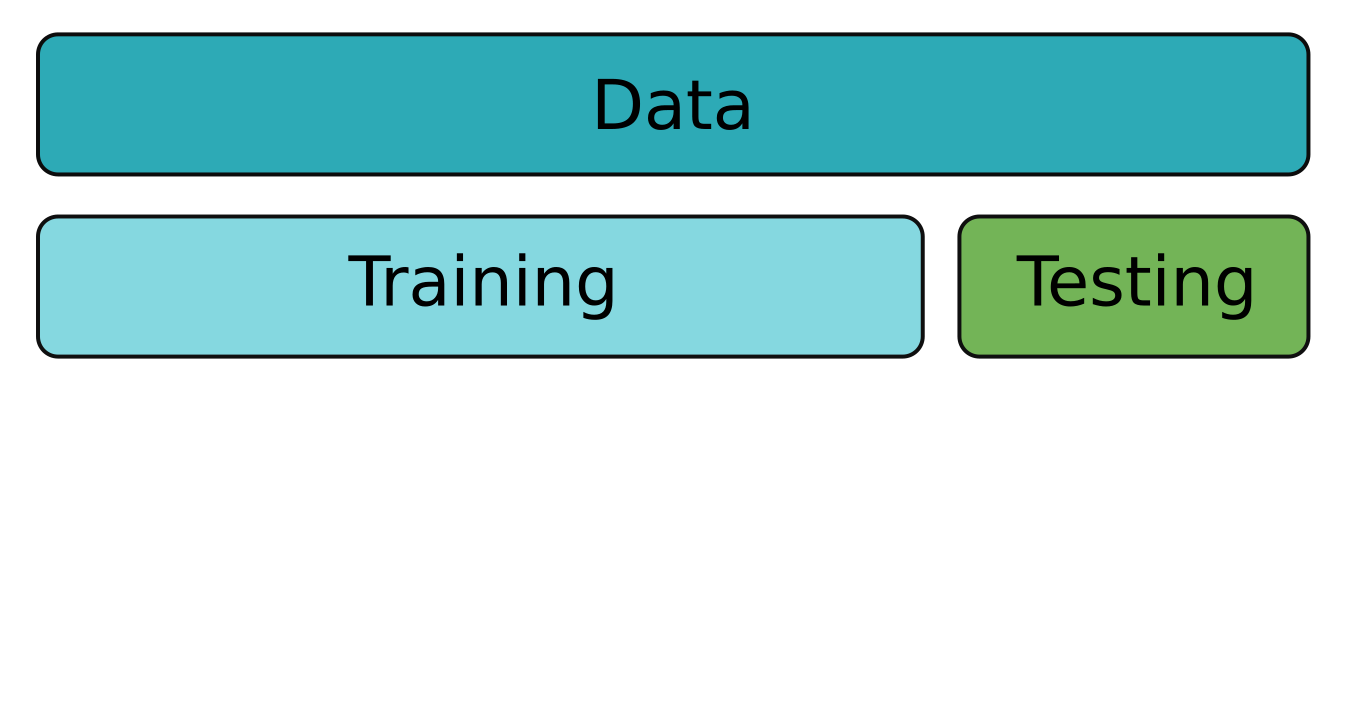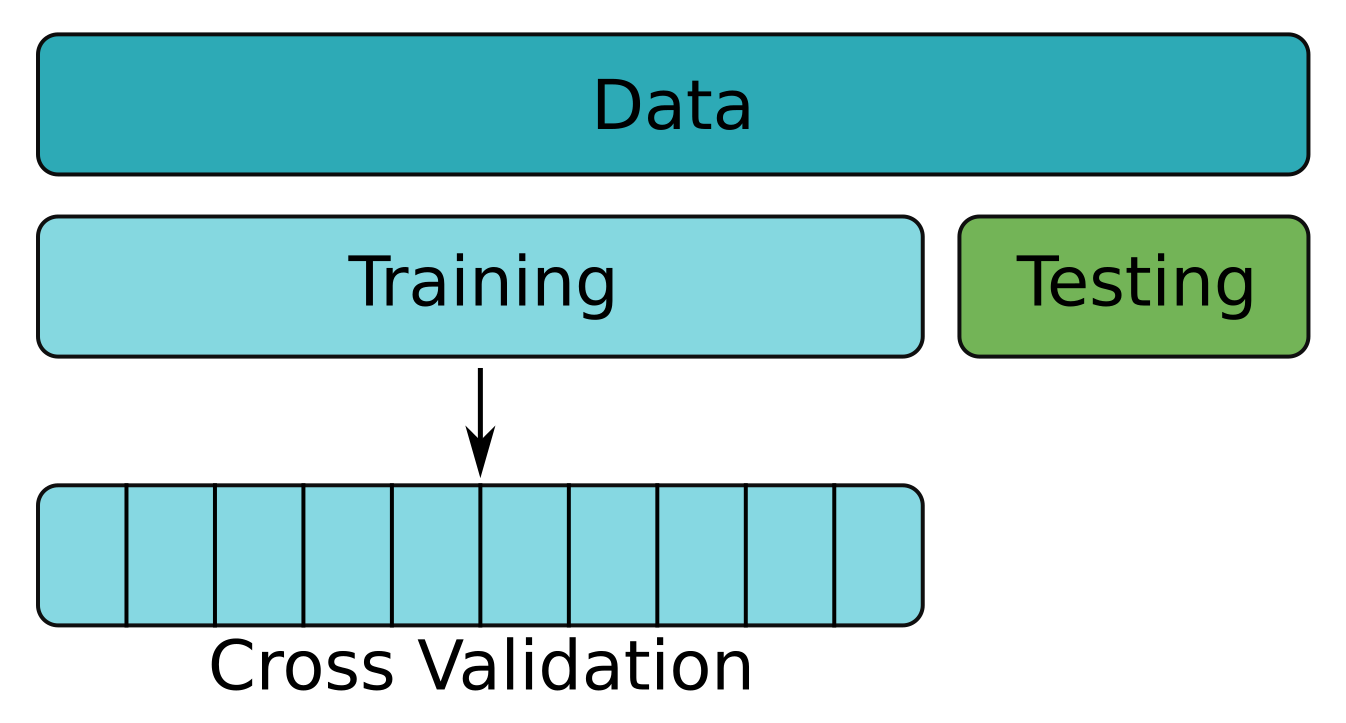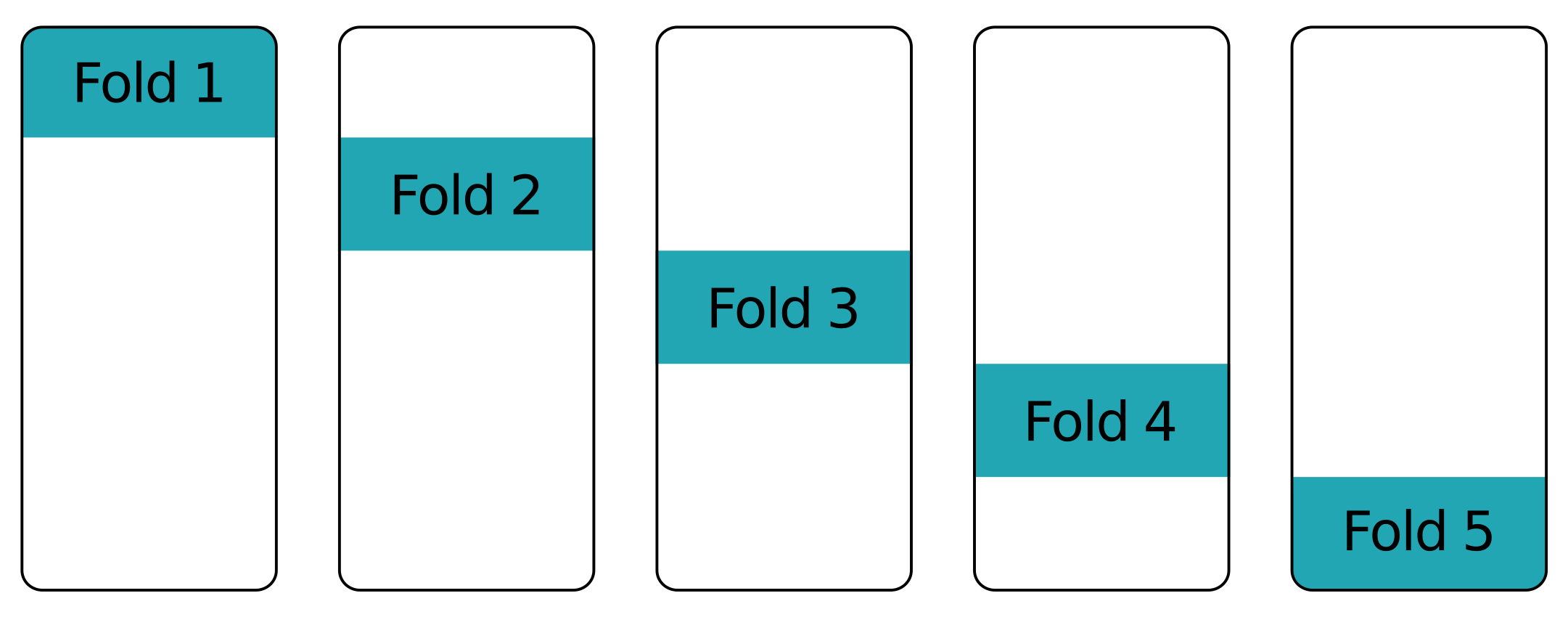Cross-Validation
Machine Learning with PySpark

Andrew Collier
Data Scientist, Fathom Data



Fold upon fold - first fold

Fold upon fold - second fold

Fold upon fold - other folds

Cars revisited
cars.select('mass', 'cyl', 'consumption').show(5)
+------+---+-----------+
| mass|cyl|consumption|
+------+---+-----------+
|1451.0| 6| 9.05|
|1129.0| 4| 6.53|
|1399.0| 4| 7.84|
|1147.0| 4| 7.84|
|1111.0| 4| 9.05|
+------+---+-----------+
Estimator and evaluator
An object to build the model. This can be a pipeline.
regression = LinearRegression(labelCol='consumption')
An object to evaluate model performance.
evaluator = RegressionEvaluator(labelCol='consumption')
Grid and cross-validator
from pyspark.ml.tuning import CrossValidator, ParamGridBuilder
A grid of parameter values (empty for the moment).
params = ParamGridBuilder().build()
The cross-validation object.
cv = CrossValidator(estimator=regression,
estimatorParamMaps=params,
evaluator=evaluator,
numFolds=10, seed=13)
Cross-validators need training too
Apply cross-validation to the training data.
cv = cv.fit(cars_train)
What's the average RMSE across the folds?
cv.avgMetrics
[0.800663722151572]
Cross-validators act like models
Make predictions on the original testing data.
evaluator.evaluate(cv.transform(cars_test))
# RMSE on testing data
0.745974203928479
Much smaller than the cross-validated RMSE.
# RMSE from cross-validation
0.800663722151572
A simple train-test split would have given an overly optimistic view on model performance.
Cross-validate all the models!
Machine Learning with PySpark

